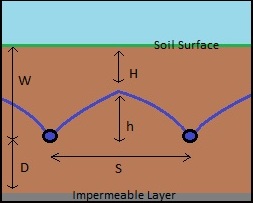
(309) 532 - 2989
agrem@agrem.com
What is a drainage coefficient?

The term drainage coefficient stands for the theoretical maximum rate of water removed from a field over a period of time. In the United States, we use the number of acre inches of water removed in 24 hours as the measure. So, for instance, a 1/2 drainage coefficient means that the system can remove 1/2 of an acre inch of water in a day.
What determines the drainage coefficient?
There are three factors that determine a drainage coefficient. First is soil. Soil types vary in the rate that water moves through them. Some soils, such as clays, move water slower than others, such as sand. Second, the depth, spacing and placement of tile determines how much distance water has to move through the soil to the tile. As an example, the wider the spacing, the longer it will take for water to move to the tile. Also, some soils are stratified more than others, for instance some soils have loamy top soils and clay subsoils. In these soils, the rate water moves through the soil varies depending on depth, often causing low drainage coefficients if tile is placed too deep. Third, the size and slope of tile determines how much water a drainage system can move to an outlet. Larger tile move more water, and steeper tile increases the velocity of water. All of these factors are considered by AGREM in designing a drainage system.